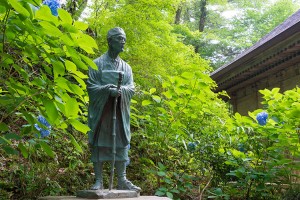National Poetry Month: Haiku
April is National Poetry Month, an annual celebration of this unique form of literature. Each week, Behind the Headlines will feature the art of poetry or a famous poet.
Haiku (pronounced hy koo) is a popular form of Japanese poetry. In Japanese, a haiku consists of 17 syllables arranged in three unrhymed lines. The first and third lines have 5 syllables, and the second line has 7 syllables. A haiku typically tries to create an impression or mood. Haiku themes are generally simple and deal with everyday situations and sensations. However, the poet tends to hint at them rather than treat them in a plain, direct manner.
According to Japanese tradition, each haiku must contain a kigo—that is, a word that indicates the season in which the poem is set. Some kigo are obvious, such as snow to indicate winter. Others are less obvious. For example, the word balloon can indicate spring.
Haiku originated in the 1600’s as the first three lines, called hokku, that served as the opening stanza of a longer poem. From the late 1600’s to the early 1800’s, the Japanese poets Matsuo Basho, Yosa Buson, and Kobayashi Issa composed classic hokku. Basho composed the following lines during the late 1600’s:
Temple bells die out.
The fragrant blossoms remain.
A perfect evening!
In 1892, the poet and journalist Masaoka Shiki published rules that established haiku as an independent form of poetry rather than a part of a longer work of verse.
You can try writing your own haiku! In many parts of the world, spring has arrived. You could write a haiku about the blossoming flowers in a park or the chirping birds outside your window. When you’re done, read your poem to your musical bird friends!



